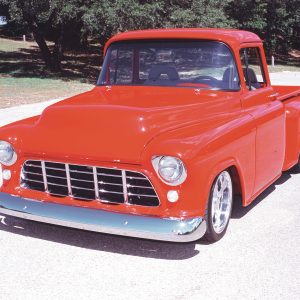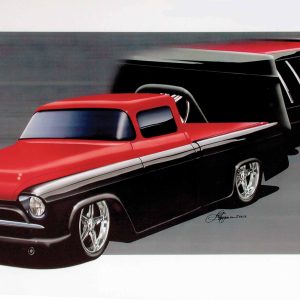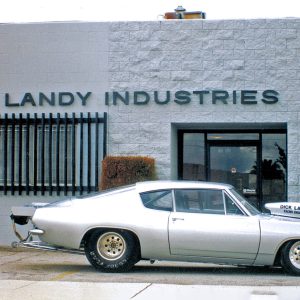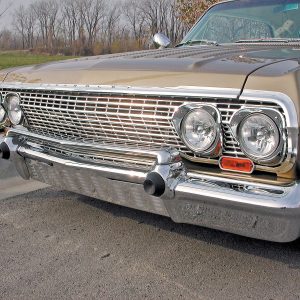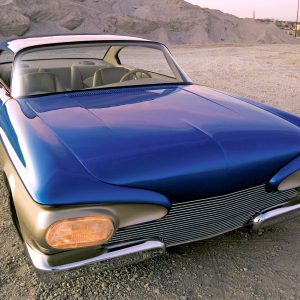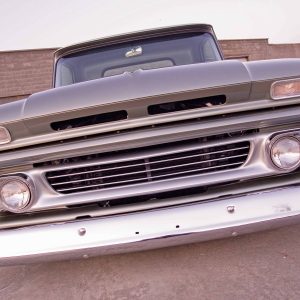

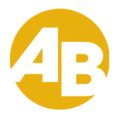
THE AUTO BUILDER
Featured
- All Post
- 20 High Priority - SR Super Rod
- Builds
- 25 High Priority - FB Ford Builder
- Cars
- 30 High Priority - AR American Rodder
- 01 Post Status
- 35 High Priority - RD Rodders Digest
- 40 High Priority - OTR On the Road
- 45 High Priority - SRB Street Rod Builder
- 50 High Priority - TB Truck Builder
- 55 High Priority - BSCENE Buckaroo Scene
- 60 High Priority - FPB Family Power Boat
- Trucks
- Swaps
- Performance Boats
- _000 Home Sliders
- Builders
- 00 Sidebars
- Manufacturers
- 05 High Priority - HCI Hot Compact Imports
- 05 Publications
- 10 High Priority - CR Chevy Rumble
- Back
- Chassis
- Engine
- Fuel System
- Electrical
- Exhaust
- Transmission / Drivetrain
- Suspension
- Steering
- Brakes
- Wheels and Tires
- Interior
- Exterior
- Accessories
- Power Adders
- Back
- Chassis
- Engine
- Fuel System
- Electrical
- Exhaust
- Transmission / Drivetrain
- Suspension
- Steering
- Brakes
- Wheels and Tires
- Interior
- Exterior
- Accessories
- Power Adders
- Back
- Chassis
- Engine
- Electrical
- Exhaust
- Fuel System
- Transmission / Drivetrain
- Suspension
- Steering
- Brakes
- Wheels and Tires
- Interior
- Exterior
- Accessories
- Power Adders
- Back
- Chassis
- Engine
- Electrical
- Exhaust
- Fuel System
- Transmission / Drivetrain
- Suspension
- Steering
- Brakes
- Wheels and Tires
- Interior
- Exterior
- Accessories
- Power Adders
- Back
- Chassis
- Engine
- Fuel System
- Electrical
- Exhaust
- Transmission / Drivetrain
- Suspension
- Steering
- Brakes
- Wheels and Tires
- Interior
- Exterior
- Accessories
- Power Adders
- Back
- Chassis
- Engine
- Fuel System
- Electrical
- Exhaust
- Transmission / Drivetrain
- Suspension
- Steering
- Brakes
- Wheels and Tires
- Interior
- Exterior
- Accessories
- Power Adders
- Back
- Chassis
- Engine
- Fuel System
- Electrical
- Exhaust
- Transmission / Drivetrain
- Suspension
- Steering
- Brakes
- Wheels and Tires
- Interior
- Exterior
- Accessories
- Power Adders
- Back
- Engine
- Fuel System
- Electrical
- Outdrives
- Steering
- Interior
- Accessories
- Power Adders
- Exterior and Hull
- Back
- Chassis
- Engine
- Electrical
- Exhaust
- Fuel System
- Transmission / Drivetrain
- Suspension
- Steering
- Brakes
- Wheels and Tires
- Interior
- Exterior
- Accessories
- Power Adders
- Back
- Chevrolet
- Cadillac
- Pontiac
- AMC
- Buick
- Jeep
- Lincoln
- Ford
- Honda
- GMC
- BMW
- Mitsubishi
- Dodge
- Nissan
- Chrysler
- Subaru
- Toyota
- Plymouth
- Mercury
- Volvo
- Volkswagen
- Oldsmobile
- Acura
- Back
- 05 Pub HCI Hot Compact Imports
- 15 Pub 4x4 4x4 Builder
- 20 Pub SR Super Rod
- 25 Pub FB Ford Builder
- 30 Pub AR American Rodder
- 35 Pub RD Rodders Digest
- 40 Pub OTR On the Road
- 55 Pub BSCENE Buckaroo Scene
- 10 Pub CR Chevy Rumble
- 50 Pub TB Truck Builder
- 60 Pub FPB Family Power Boat
- 45 Pub SRB Street Rod Builder
- Back
- Chip Foose
- Ring Brothers
- Jack Fuller
- Bob Cullipher
- Jerry Nichols
- Bobby Alloway
- Jesse James
- Carl Casper
- J.F. Launier
- Steve Sellers
- Boyd Coddington
- Rad Rides by Troy
- Cal Auto Creations
- George Barris
- West Coast Customs
- Back
- Street Rods
- Hot Rods
- Late Model
- Drag Race
- Handling
- Compact Cars
- Chassis
- Engine
- Fuel System
- Electrical
- Exhaust
- Transmission / Drivetrain
- Suspension
- Steering
- Brakes
- Wheels and Tires
- Interior
- Exterior
- Accessories
- Power Adders
- Chassis
- Engine
- Fuel System
- Electrical
- Exhaust
- Transmission / Drivetrain
- Suspension
- Steering
- Brakes
- Wheels and Tires
- Interior
- Exterior
- Accessories
- Power Adders
- Chassis
- Engine
- Electrical
- Exhaust
- Fuel System
- Transmission / Drivetrain
- Suspension
- Steering
- Brakes
- Wheels and Tires
- Interior
- Exterior
- Accessories
- Power Adders
- Chassis
- Engine
- Electrical
- Exhaust
- Fuel System
- Transmission / Drivetrain
- Suspension
- Steering
- Brakes
- Wheels and Tires
- Interior
- Exterior
- Accessories
- Power Adders
- Chassis
- Engine
- Electrical
- Exhaust
- Fuel System
- Transmission / Drivetrain
- Suspension
- Steering
- Brakes
- Wheels and Tires
- Interior
- Exterior
- Accessories
- Power Adders
- Chassis
- Engine
- Fuel System
- Electrical
- Exhaust
- Transmission / Drivetrain
- Suspension
- Steering
- Brakes
- Wheels and Tires
- Interior
- Exterior
- Accessories
- Power Adders
- Back
- 05 Post Imported
- 20 Post Missing Images (All)
- 25 Post Missing Images (Partial)
- 15 Post In Progress
- 30 Post Internal Review
- 40 Post On Hold
- 50 Post Approved
- 10 Post Images Imported
- 17 Post Missing TXT Files
- 18 Post Missing PDF Files
- 27 Post Missing Content
- Back
- Chassis
- Engine Swaps
- Interior Swaps
- Driveline
- Back
- Street Trucks
- OffRoad Trucks
- Chassis
- Engine
- Fuel System
- Electrical
- Exhaust
- Transmission / Drivetrain
- Suspension
- Steering
- Brakes
- Wheels and Tires
- Interior
- Exterior
- Accessories
- Power Adders
- Chassis
- Engine
- Fuel System
- Electrical
- Exhaust
- Transmission / Drivetrain
- Suspension
- Steering
- Brakes
- Wheels and Tires
- Interior
- Exterior
- Accessories
- Power Adders
- Back
- 01 Sidebar Left
- 01 Sidebar Right
Spotlighter
POPULAR READS
KING OF THE ROAD
The ’68 SHELBY G.T.500KR
Author
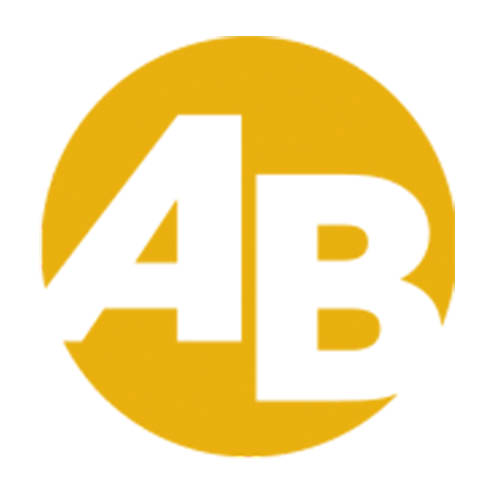
Jim Maxwell
Story & Photography
The Heart of the Beast: 428 Cobra Jet Engine
The 428 Cobra Jet powerplants are special and use carefully selected parts. The bottom end is essentially a 428 Police Interceptor engine—4.13-inch bore and 3.984-inch stroke—fitted with cylinder heads that previously saw duty on 406 and low-riser 427 engines. These heads provided excellent performance, featuring large ports—2.34×1.34 inches—and 2.06-inch intake and 1.62-inch exhaust valves. Fully machined dome 10.6:1-compression pistons, full-floating locked-in pins and large-diameter (13/32-inch) connecting rod bolts were all part of the package.
Performance Specs and Engineering
The CJ engines feature a hydraulic camshaft (0.481-/0.490-inch intake and exhaust lift, 290-degree duration) and a Holley 735cfm four-barrel carburetor mounted on a cast-iron version of the Police Interceptor intake and low-restriction exhaust manifolds. Ford gave it an innocent horsepower rating of 335 hp at 5,400 rpm, with torque listed at 440 lb-ft at 3,400 rpm.
Michigan Production and Styling Upgrades
Starting in the 1968 model year run, Shelby Mustangs were built at the A.O. Smith Company in Ionia, Michigan, and as with the ’67 version, these cars received styling enhancements and a more aggressive look to differentiate them from a standard Mustang. Marketing materials called these ’68 cars Shelby Cobras instead of Shelby Mustangs, perhaps as a way to keep the Cobra name alive, since the aluminum two-seat Cobras were out of production by then.
Exterior Design Details
Up front, the ’68 cars have the extended fiberglass nose cone; individual SHELBY lettering adorned the top section; and rectangular driving lights were fitted into the grille cavity. A scooped and vented fiberglass hood was part of the package, providing a large dome area that housed the functional ram-air system.
Side and Rear Styling Features
On the sides, Shelby Mustangs for ’68 had scoops on the rear quarter panels, between the door and wheel opening, with air extractor vents on the C-pillars on the fastback models. Side stripes with identification markings were blue on white cars, and black on all others.
The rear of the ’68 Shelby featured a fiberglass-spoilered tail, again with the same SHELBY lettering as the front. Parts-bin sequential turn-signal lights were added, and chromed exhaust tips were used, plus a pop-open gas cap. No matter which angle you viewed the Shelby from, these cars appeared different from the less-expensive Mustang. Because production of these Shelby Mustangs was moved to Michigan, the fiberglass parts were manufactured using matched metal dies, which was better quality compared to the method of hand-rolling, as was done at the smaller Shelby California facility.
Interior Features and Driving Enhancements
Inside, a rollbar (padded on convertibles) was added for occupant protection, inertia-reel shoulder harnesses were used, and a pair of S-W gauges (oil pressure and amp) was mounted in the center console. The Mustang Deluxe interior was used on all ’68 Shelby Mustangs, including the G.T.350, G.T.500 and G.T.500KR.
Power steering (16:1 ratio) and power disc front brakes were standard equipment, as were adjustable shocks front and rear. Heavy-duty suspension was part of the big-block Shelby Mustang package, and on these King of the Road models, the rear drums were larger. In addition, shock towers were beefed up for added structural rigidity, and staggered rear shocks were featured on manual-transmission applications. Positraction was standard unless A/C was chosen. In those days, a ’68 four-speed fastback G.T.500KR was able to near 14-second-flat elapsed times in the quarter-mile at over 102 mph, and some of the more aggressively prepared Shelbys could crank out a mid-13 elapsed time at more than 105 mph.
A Survivor: Lewis Carlisle’s G.T.500KR
Lewis Carlisle purchased the G.T.500KR shown here new in November 1968. It is one of 933 produced ’68 fastback KRs, and few if any would argue it is the most original of the bunch. Optioned equipment on the car included an automatic transmission, air conditioning, tinted glass, AM radio, tilt-away steering and a fold-down rear seat.
Preservation and Legacy
The car was later sold in 1987 after Carlisle’s death, and at the time, the car had registered only 6,237 miles. Today, it has only 6,727 miles recorded on the odometer. Carlisle, an airline pilot, was a car and airplane collector and big-game hunter. The standard wheels on these cars were mag-style steel units, with newly cast 10-spoke Shelby alloys as an option. This car, as purchased, included American Racing aftermarket wheels, plus an upgraded steering wheel originally specified for a ’67 Shelby Mustang.
Timeless Condition
What is amazing about this car is that it’s still in original condition, and the paint, interior and engine compartment all still look like the day it was purchased. Only the battery, oil filter and tires have been replaced from when it was driven off the Galpin Ford lot. This G.T.500KR has been shipped overseas and returned to America, and all these years later it looks no worse for wear.
Driving History
Today Fargo, North Dakota’s Bill Wiemann, a muscle car lover who appreciates these original untouched examples, owns the car. Hearing the car’s history from him and then starting up that 428 Cobra Jet powerplant and rolling the car out of the garage, it seemed as though it was still 1968—the car is just that pristine.
After our photo shoot, we strapped ourselves in the car and went on a little joy ride to exercise the big Cobra Jet engine. Once the engine temperature gauge showed normal operating temperature, the secondaries were opened up—”waaah”—and the throaty 428 showed off its power! The beast has a nasty growl, and surely when the car was cruising around in the wilds of America, the locals took notice of the Wimbledon White Shelby.
LETTER FROM CARROLL SHELBY ON THE G.T.500KR
This letter was sent to prospective buyers:
Dear Friend:
Thanks for your request for information about my Shelby Cobra G.T. cars. The enclosed material should give you a pretty complete idea of what these cars are like.
Please note that my new G.T.500KR is being marketed in addition to the G.T.350 and G.T.500 described in the color brochure. The G.T.500KR is powered by Ford’s fantastic new Cobra Jet 428ci V-8. I’ve Shelby-ized it a little, for just a tweak more top-end performance, although it’s pretty unbelievable as it is. (The Cobra Jet replaces the 427 engine, which was proposed but not produced for ’68.)
You’ll find a Cobra dealer not too far from you. He’ll be glad to answer your questions about prices, trade-ins, terms, delivery, options and equipment…and to give you the pleasure of trying a new Cobra G.T.350, G.T.500 or G.T.500KR for yourself.
Thanks again for your interest in Shelby cars.
Cordially,
Carroll Shelby





